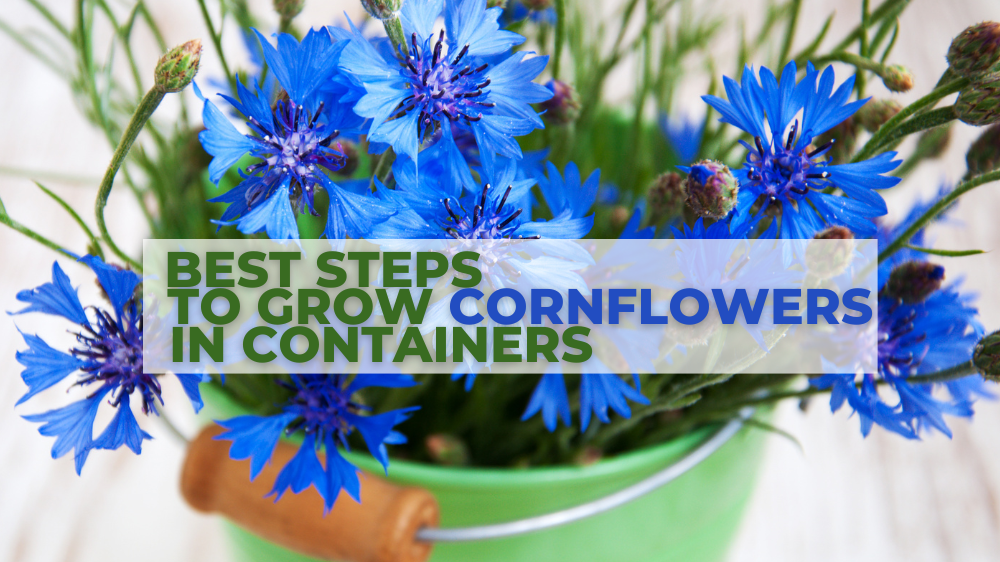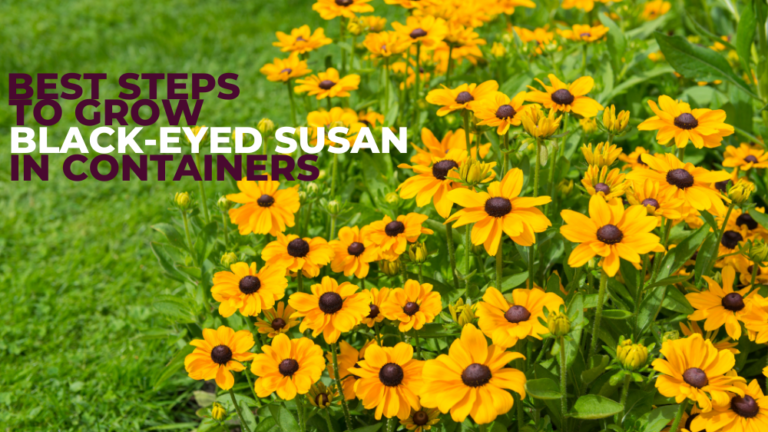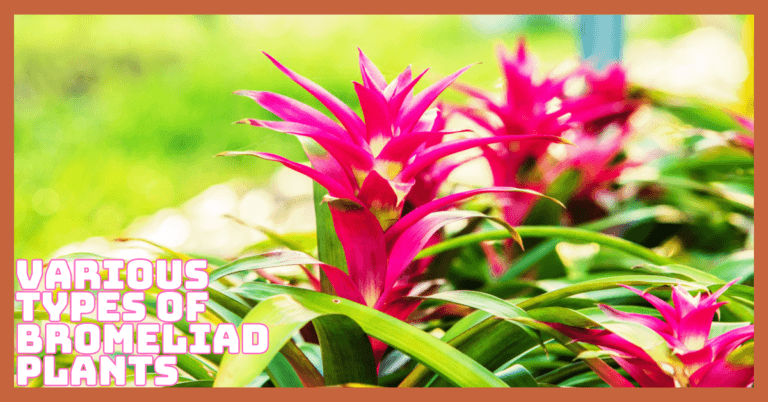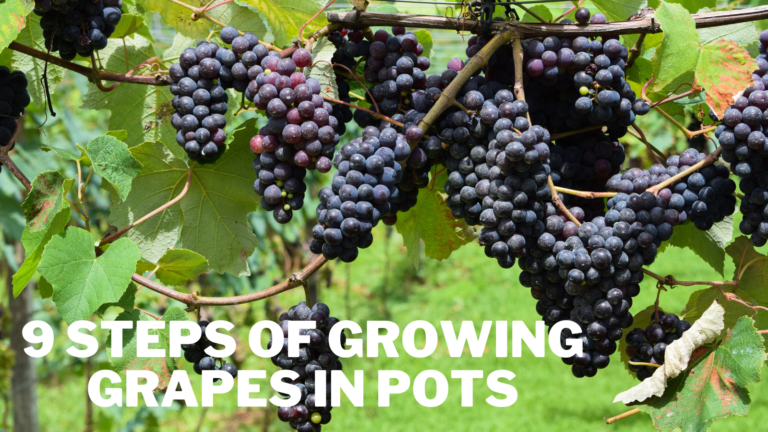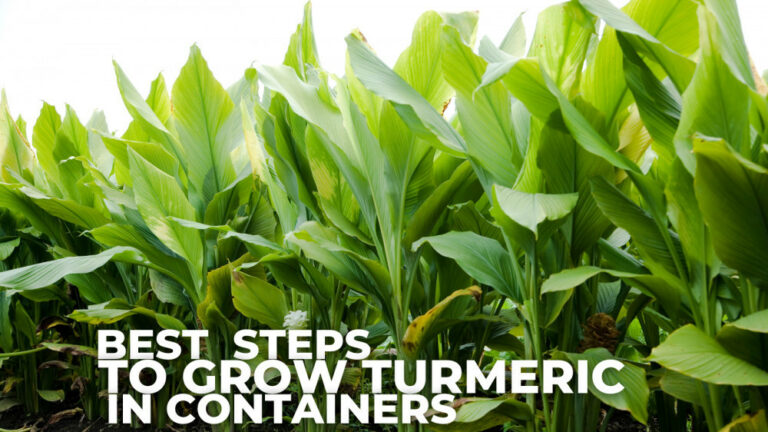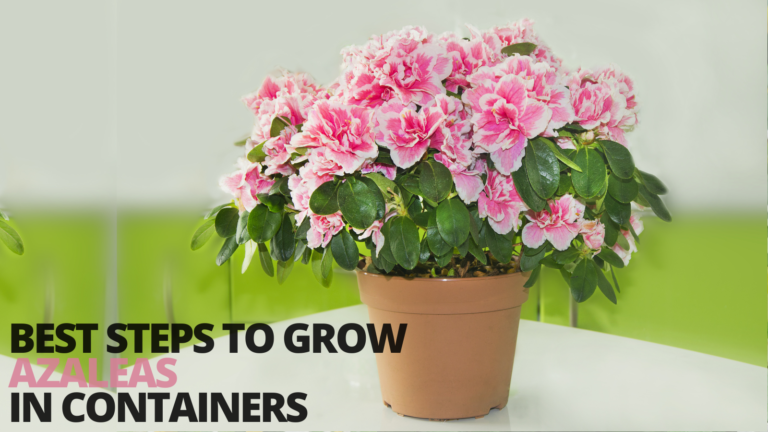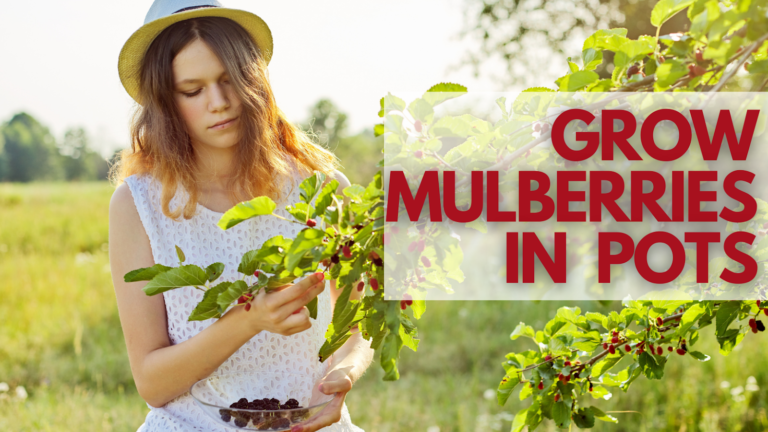Best Steps To Grow Cornflowers In Containers
Best Steps To Grow Cornflowers In Containers
Centaurea cyanus, sometimes known as bachelor's buttons, is available in annual and perennial forms. The perennial species propagates through stolons, while the annual types self-seed. Both are fantastic cut flowers and garden specimens for wildflowers.
Can bachelor's buttons be grown in a pot? The true blue colour of bachelor's buttons grown in containers can be used to contrast and highlight other flower and plant colours. You only need a colour scheme, healthy soil, the correct container, and a setting.
History & Origin Of Cornflowers
The herbaceous annual plant Centaurea cyanus, often known as bachelor's button, belongs to the family Asteraceae.
Cornflowers are native to Europe, although they are frequently grown as garden plants in North America. Outside of its original habitat, it has naturalized as an invasive species. Their common name comes from the fact that they were once common weeds in fields of maize and other cereals.
They are frequently used in bouquets as fresh or dried flowers. The plants have slender, gray-green leaves and can reach heights of 30–90 cm (1-3 feet).
They produce bract-enclosed papery flower heads. The ray blooms on the flower heads are blue, pink, or white, drawing butterflies. In favourable settings, cornflowers quickly reproduce.
Cornflower is an edible flower with a spicy, clove-like flavour. It can be added to desserts as a finishing touch, incorporated into alcoholic beverages (like vodka), and used to add more colour to salads. Extra nutrients like folate, vitamin C, biotin, calcium, and flavones are abundant in cornflowers.
You can add cornflowers from your garden to your dishes. Because the water content of the plant has not been affected by the light or heat, harvest the blossoms in the morning.
Use only flowers free of pesticides or treated with a pesticide approved for use on food products. The pesticide label should always be ready for harvesting instructions. Never eat flowers from florists, nurseries, or roadside stands.
Types Of Cornflowers
When people think of cornflowers, they typically picture sky-blue flowers swaying in a warm breeze. Centaurea cyanus, an annual, and Centaurea Montana, a perennial, both have vivid blue flowers.
However, they can also be a variety of pink, lavender, violet, purple, or white. Cornflowers come in various heights, from 3-foot tall to 6-inch dwarf cultivars.
Cornflowers are drought- and deer-resistant additions to your landscape, whether in flowerbeds, your perennial garden, or as cut flowers. Ideally, you should know the best varieties to grow cornflowers in containers.
1. Annual Cornflowers (Centuarea cyanus)
Spring through July is when annual cornflowers (Centuarea cyanus) bloom, often known as bachelor's buttons or blue bottles.
They come in various colours besides the standard blue cornflower, including violet, pink, lavender, and white.
The flowers have ragged petals and are 1½ inches across. Standard annual plants spread out 6 to 12 inches wide and reach 2½ to 3 feet tall.
As they grow to their maximum height, they could blow over in the wind, necessitating staking.
Annual cornflowers can be planted in cutting, cottage, or meadow gardens to give them a wildflower appearance. Despite being regarded as an annual, these cornflowers frequently self-seed.
2. Dwarf Annual Cornflowers
Annual cornflowers in smaller sizes are suitable for planting in flowerbeds and pots. Centaurea cyanus “Dwarf Blue Midget” has flowers that have a real blue colour. It only reaches 6 to 12 inches and blooms from June through September.
Another small cornflower, “Florence Mix” (Centaurea cyanus “Florence”), grows to a height of 6 to 12 inches. It blooms from June to August and includes pink, white, and blue flowers.
3. Perennial Cornflowers (Centaurea Montana)
The magnificent, 2-foot wide and tall perennial cornflower, or Centaurea Montana, blooms from May through June.
It has a 2-inch violet-blue flower with fringes with purple to reddish centers. Perennial cornflower, often known as mountain bluet, is hardy in USDA plant hardiness zones 3 through 8.
Perennial cornflowers quickly establish colonies by spreading via underground stolons. Thanks to their vivid blue blossoms, they make an excellent addition to the cutting or cottage garden.
4. Perennial Cornflowers With Unusual Colours
Additional perennial cornflower cultivars with colourful foliage or distinctive flower hues interest your yard.
Centaurea Montana “Gold Bullion” has lavender flowers, maroon centers, and golden-hued leaves. It is hardy in USDA zones 3 through 8 and grows to a height of one to two feet.
For a tall perennial cornflower with dark purple to black star-shaped flowers, plant “Black Sprite” (Centaurea Montana “Back Sprite”), which grows 30 to 35 inches tall and is hardy in USDA zones 3 through 9.
For a midsized perennial cornflower with deep purple flowers, plant “Amethyst Dream” (Centaurea Montana “Amethyst Dream”), which grows 18 to 20 inches tall and is hardy in USDA zones 3 through 9.
Grow Cornflowers In Containers
The cornflower plant, commonly known as a bachelor's button, is an annual herbaceous plant of the family Asteraceae.
Cornflower plants grow to 30 to 90 cm and have narrow, gray-green coloured leaves and papery flower heads encircled by bracts.
The plants produce lovely cut flowers and draw bees, butterflies, and other beneficial insects for pollination.
Although blue is the most popular hue, there are different versions in white, red, pink, and purple. In addition, we cover the following subjects regarding cornflower cultivation in this article:
Container Requirements To Grow Cornflowers
Poor soil and a sunny, open area are necessary for them. Although we typically picture dashing through big fields of cornflowers, you don't need a lot of space to cultivate them.
Annual cornflowers thrive under a little bit of density. Depending on the species or cultivar, thin the annuals between 6 and 12 inches apart. Perennials should be spaced 2 to 3 feet apart.
Soil To Grow Cornflowers In Containers
Cornflower plants thrive on relatively normal soil without additional fertilizer or compost. Attempt to offer a typical, well-drained garden soil. Contrary to most garden flowers, the cornflower plant demands alkaline soil with a pH of 7.2 to 7.8.
However, if your soil is acidic, you can add crushed limestone to the garden beds. To grow cornflower plants, choose soil that drains well and ensure the container has plenty of drainage holes.
You could even blend soilless materials. The potting mix needs to be one that won't retain too much moisture because cornflower plants prefer soil that is on the dry side.
Watering Requirements
During the hottest months of July and August, cornflowers need 1 inch of water every week. In between watering, let the soil gradually dry out, but don't allow it to become entirely dry, or the plant will flop. A good, thorough drink will typically cheer it up if this occurs.
Temperature & Humidity
Cornflower can withstand mild freezing as well as a scorching day in the summer. The ideal temperature range for this plant is 60 to 80°F.
However, it may require 85 to 95°F to reach flowering maturity. On average, a humidity range of 30 to 50 percent is ideal for cornflower growth.
However, during periods of high humidity, keep a close eye on your garden because this plant is vulnerable to fungus.
Sunlight
Although cornflowers enjoy full sun, they can withstand some midday shadows, especially in the sweltering summer months. The plant becomes lanky and more prone to flopping when it spends the entire day in the shade.
Fertilizer
If your soil is thin, fertilize your cornflowers monthly with diluted liquid manure or compost tea. The young plants should start receiving fertilizer in the early spring when they are 6 inches tall and continue receiving it throughout the summer.
If your flowers are planted in rich soil, you won't need to feed them. One or two bags of compost added to the soil before planting usually suffice for the growing season.
Every two months, spread some compost around the base of your cornflower plants. This offers a lot of nutrition and ensures that you enjoy abundant flowers all year.
During the spring and summer, cornflower plants are fed monthly with a balanced flower fertilizer.
For the correct dosage, see the manufacturer's instructions, and then use half the amount advised. Avoid over-fertilizing the soil since the cornflower plant can become invasive if the environment is too fertile.
Pruning
Pruning a cornflower patch can prolong its bloom period even though it is not necessary for growth. After the plants' initial flowering time, cut the long stems back to the secondary stems (usually around mid-summer).
Cut the plants back to the ground after the second bloom or pull them out by the roots to make room for replanting in the late season.
Propagation
- Most individuals opt to produce these plants from seed because it is the most straightforward approach. Cornflower seeds can be planted in pots or straight in the ground.
- In 7 to 14 days, cornflower seeds will begin to sprout. One plant should be spaced every 8 to 12 inches after germination.
- Once they push up plant leaves and stems, your plants will fill in the space and eventually flower.
- Wait until the blossoms have completely withered and faded naturally on the plant before gathering cornflower seeds.
- After that, detach the blossom from the stalk and smash it to reveal the seeds inside. The rectangular cornflower seeds have a brownish hairy spike at the end.
- Store your seeds until the following planting season after allowing them to dry for 7 to 10 days in a cool, dry environment.
Grow Cornflowers From Seeds
The ability to grow cornflower from seed is straightforward, as one might anticipate from a plant that self-seeds so quickly.
You can gather your seeds from dried flower heads, which you can then put away throughout the winter in preparation for planting.
Or you can get bulky, reasonably priced packages of cornflower seeds. Growing cornflowers at home are simple and affordable.
These plants produce single or double flowers with petal fringes and leaves in shades of gray-green.
Taller plant species are preferred in cottage gardens, while dwarf plant varieties work well for borders and edging.
Though planting cornflower seeds is the only way to get higher types in the garden, they might not be easily accessible at nearby nurseries. They are typically simple to cultivate both inside and outside.
How to cultivate cornflowers from seeds is described here:
- Directly sow seeds in the garden after the last frost in late spring. Mother Nature will determine when the seeds will sprout, so don't worry about planting too early.)
- Cover the seeds with ½ inch of soil until germination, and keep the seedbed moist with water (usually within 10 days in warm temperatures).
- Thin the seedlings after they have sprouted to increase the plants' vitality and blooming.
- Seeds can also be started inside to ensure early blooming. Carry out this procedure six to eight weeks before the last anticipated frost using a seed-starter mixture in a seedling tray. Keep the soil warm and moist once the seedlings appear.
- After that, grow them until it's safe to move them outside in a bright area or a sunny window.
Potting And Repotting
When growing cornflowers in pots or other containers, keep the soil on the dry side to replicate pasture conditions. Pots made of porous clay or terracotta work best.
Select perlite-rich, well-drained soil for planting, or use an organic substitute (similar to a cactus potting mix). For a neat appearance, deadhead your potted cornflower; if cultivated in this manner, be prepared for a brief flowering period.
How To Get Cornflowers To Bloom
Always plant your crop in a location that receives enough of sunlight because cornflower flowers best in bright, sunny surroundings.
Although deadheading may promote additional flowering, it is not recommended with this particular annual.
The only thing you can do if your cornflower isn't blooming because of insufficient light make better plans for next year and sow them in a brighter location.
Pests & Diseases Of Cornflowers
When properly cared for, cornflower plants are often highly robust and healthy. However, they may develop rust, mould, and mildew if they receive too much water and have insufficient airflow and sunlight. They are also prone to withering in drought-like conditions.
Cornflower plants are rarely bothered by pests. Some aphid species settle on or beneath leaves. Neem oil can eradicate them since it can be applied to all plant surfaces, suffocates eggs, and kills adults.
Another sucking insect that might eat your cornflower plant is the mealybug. Although cornflower plants are not their preferred species, they could still be in danger. For their eviction, use insecticidal soap.
In addition to these things, rabbits will nibble on the leaves of your plants. Consider them helpful because they can also help you eliminate pests like caterpillars.
The flowers attract beneficial insects, and ladybugs will assist in getting rid of aphids. A garden will flourish if it has bees and other pollinating insects. A minimal number of diseases will harm your cornflowers.
Powdery mildew illness removal can take some time. Neem oil is effective but needs to be applied several times.
Weekly sprayings will lessen the possibility of pest infestation or powdery mildew disease. Rust can also be seen; wind-borne spores spread it. This fungus disease leaves yellow or white patches on the tops of plant leaves.
Cornflower Plant Care
- For Cornflower, very little specific container maintenance is required. One of the most important advice for growing cornflowers in containers is to keep the soil slightly dry. Use water-soluble plant food to fertilize container cornflower plants once every month.
- Cornflowers need to be deadheaded for the finest appearance. The few pests that bother cornflower plants are confined to fungal diseases, which are simple to avoid by monitoring water usage.
- Be ready for a brief yet beautiful season while cultivating cornflowers in pots. Except for the perennial varieties, these wildflowers are primarily seen in the spring and early summer.
- Once a week or when the top 6 inches of soil start to dry out, water your plants.
- Mulch should be applied in a 2-inch layer around the plants' root zones to help the soil retain moisture and deter weed growth.
- Carefully pinch off dead flowers once or twice a week during the blooming season.
- Look for red blotches that signify rust or fungal development signal mildew issues on the cornflower plants. To stop the spread of these diseases, remove affected plant leaves and eliminate seriously infected plants.
Harvesting Cornflowers
Cut cornflowers make lovely bouquets. For a longer-lasting show, trim the cornflower blossoms just as the buds are about to open.
Harvesting a complete stem with precise scissors will promote new growth to emerge from the plant's base.
Conclusion
The cornflower is a herb. Medicine is made using dried flowers. Fever, constipation, water retention, and chest congestion are all conditions that people treat with cornflower tea.
They also use it as a tonic, bitter, and stimulant for the liver and gallbladder. For menstrual irregularities and vaginal yeast infections, women take it. For irritation or discomfort, some people apply cornflower directly to the eye.
I trust you enjoyed this article on the Best Steps To Grow Cornflowers In Containers. Please stay tuned for more blog posts soon. Take care!
JeannetteZ
>>>Please click here to read my all-inclusive article about Container Gardening<<<
>>>Are you interested in homegrown herbs and medicine? Please click here to find out more about it!<<<
Your Opinion Is Important To Me
Do you have thoughts, ideas, or questions? I would love to hear from you. Please leave me your questions, experiences, and remarks about this article on the Best Steps To Grow Cornflowers In Containers in the comments section below. You can also email me at Jeannette@Close-To-Nature.org.
Disclosure
This post may contain affiliate links. I earn from qualifying purchases as an Amazon Associate and through other affiliate programs. Please read my full affiliate disclosure.
You might also enjoy these blog posts:
Best Steps To Grow Orange Lilies In Containers
Best Steps To Grow Snowflakes In Containers
Best Steps To Grow Hemp In Containers
Best Steps To Grow Globe Thistles In Containers
Best Steps To Grow Saffron In Containers

